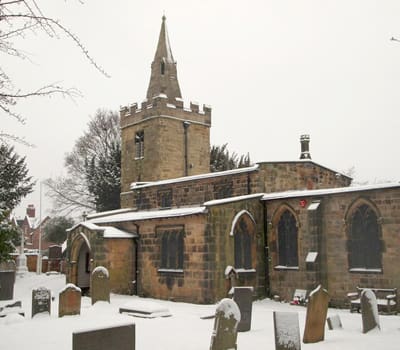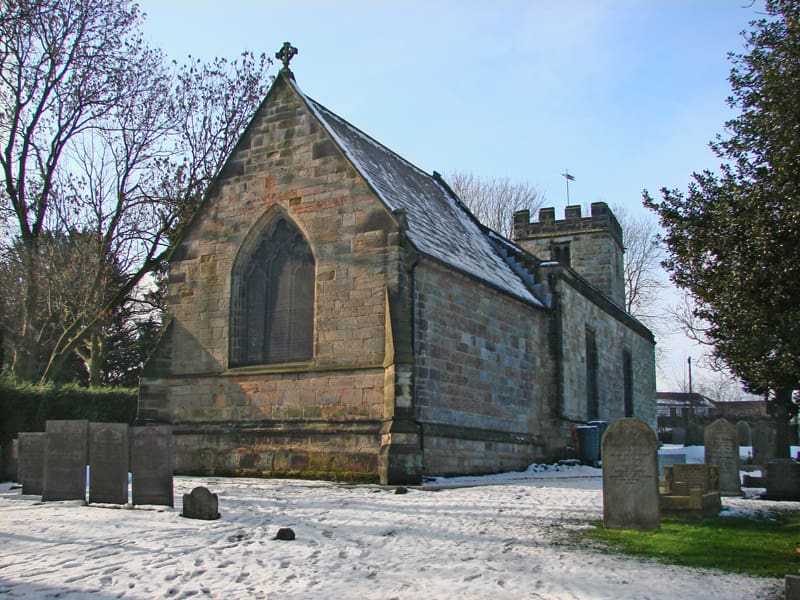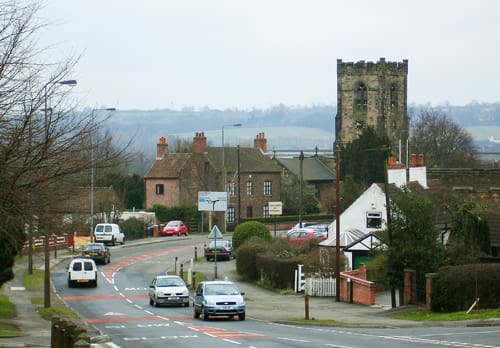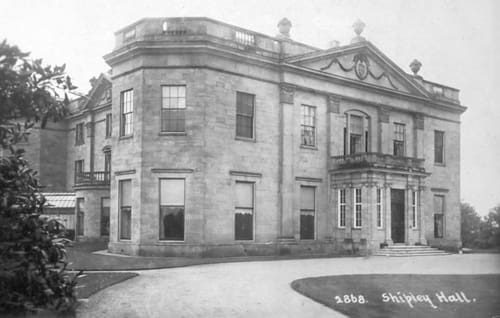Just east of Ilkeston is the village of Cossall which, like Trowell, was once part of Lord Middleton’s estate.
One of Cossall’s claims to fame is its Waterloo memorial in the churchyard of St Catherine. The memorial was unveiled on 18th June 1877, the 62nd anniversary of the battle. Newspapers of the time give more details regarding the ceremony. The memorial is to three local men who fought at Waterloo, namely John Shaw, Richard Waplington and Thomas Wheatley. Waplington is believed to have been born in Cossall in 1787 and worked in a colliery until he enlisted in the Life Guards. Shaw was born on a local farm and his exploits during the battle earned him recognition by Sir Walter Scott who immortalised him in a poem. Wheatley was born in Cossall Marsh (situated at the Awsworth end of Cossall) in 1795; he survived Waterloo and returned to Cossall and worked in the blacksmith’s forge at the Babbington Colliery. Waplington and Shaw died at Waterloo.
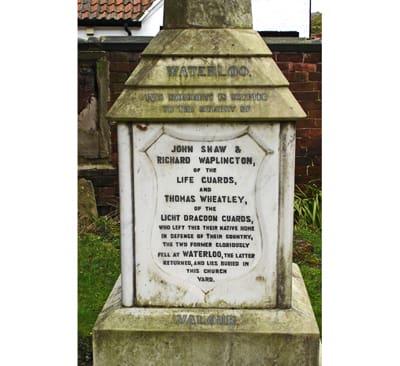
Another claim to fame for Cossall is that it is the village that DH Lawrence chose for his novel “The Rainbow” calling it Cossethay. Lawrence’s one-time fiancée Louie Burrows lived in Church Cottage, now a grade II listed building.
Another listed building is the Willoughby Almshouses. Built in 1685 for “4 single poor men over 60 years of age and 4 single poor women over 55 years of age” by George Willoughby, nephew to Lord Middleton. Willoughby lived in the Manor House in Cossall: a farm is now on this site. Willoughby is buried in the church. The church of St Catherine is also Grade II listed. The tower is 13th Century and has 2 bells: the font is 15th Century. In 1842 the church (apart from the tower and spire) was rebuilt.
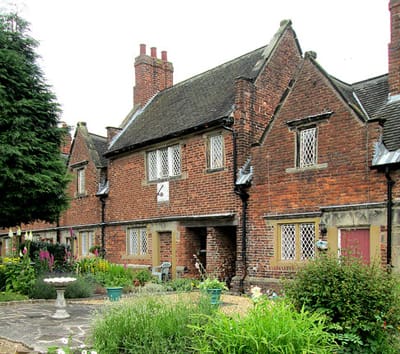
In August 1885 Cossall witnessed probably one of the most amazing spectacles in its history when “a crowd of men and women, numbering over a thousand” (some newspaper reports give the figure at over 2000) marched to the colliery manager’s house (The Hollies) in an attempt to prevent 14 miners who had returned to work from breaking their strike.
After throwing stones and bricks, demolishing a greenhouse and “damage of every description being inflicted on the premises” the colliery manager opened fire and several men were reported injured. One newspaper stated that the siege of the colliery manager’s house lasted two and a half hours. Over the next few days 29 men were arrested. Known as the ‘Ilkeston Riots’, this event made national news.
As already mentioned, mining played a large part in the history of Cossall like it did in many settlements in our locality. Within the Cossall parish it has been documented from the 13th century onwards. It is possible that workings dated to the 16th century are amongst the earliest exploitation of surface and close-surface seams locally. The site of the current Cossall industrial estate on Coronation Road was the site of the Cossall Colliery, sunk in 1878-1879 by the Cossall Colliery Company. Alfred Hewlett became Managing Director of the Company.
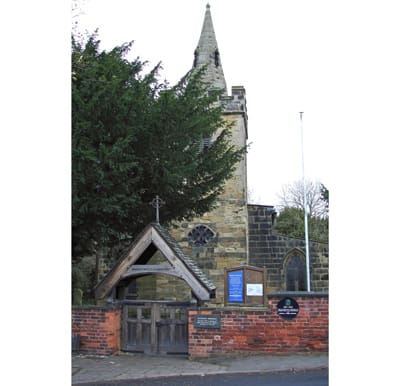
At the end of the 19th century the Cossall Colliery began to make briquettes out of slack or “small coal”. A fire at the site in 1913 caused £8000 worth of damage (although reports vary) – destroying new plant which had not long been installed.
Another mining site was at Grange Colliery along Robinettes Lane (sunk in 1932). The Oakwood Grange Colliery was renamed in 1936, and its pithead baths were opened in 1949, only to close in 1957.
The disused Nottingham Canal built in 1796 (originally to carry coal from the Erewash Valley into Nottingham and beyond) runs through the parish and part of its route forms a modern cycle path and footpath.

